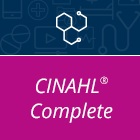Nursing & Health Sciences Research Journal
Abstract
Over the past 20 years, Pulmonary Arterial Hypertension (PAH) patients and providers have seen an increase in options to treat PAH. Currently, there are choices for the delivery of medications approved to treat patients with PAH where at one point the only option was intravenous (IV) therapy. This case study details the transition from IV Epoprostenol to oral Treprostinil for the treatment of a 53 year old female diagnosed with severe Pulmonary Arterial Hypertension whose quality of life became unbearable by the IV medication delivery route. This patient was a synchronized swimmer in her youth and her passion for water activities continued throughout her short life. After her diagnosis of severe PAH, her life abruptly changed as she was placed on triple therapy, which consisted of an endothelin receptor antagonist (ERA), a phosphodiesterase-5 inhibitor (pde-5), and the IV epoprostenol. The patient experienced severe side effects that negatively impacted her ability to resume her activities of daily life and swimming. Although she remained hemodynamically stable on IV therapy, her poor quality of life and severe depression convinced her cardiologist that transitioning to an oral treprostinil would be the only option for her survival. At the time, there was a lack of clinical trials or guidelines to support the transition from IV to oral prostacyclins to follow, so an interdisciplinary team approach needed to be taken to ensure that the safety and efficacy of the transition would be maintained.
Recommended Citation
Hyman, T., Salinero, M., Jimenez-Carcamo, F., Pallares, M., & Matos, M. (2019). Navigating a Difficult Transition in Pulmonary Arterial Hypertension: A Clinical Case Study. Nursing & Health Sciences Research Journal, 2(1), 36-40. https://doi.org/10.55481/2578-3750.1044
Creative Commons License

This work is licensed under a Creative Commons Attribution-NonCommercial-No Derivative Works 4.0 International License.
Included in
Cardiology Commons, Cardiovascular Diseases Commons, Chemicals and Drugs Commons, Nursing Commons, Pulmonology Commons, Respiratory Tract Diseases Commons


